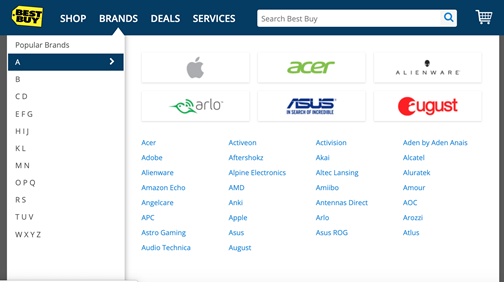Latest news about Bitcoin and all cryptocurrencies. Your daily crypto news habit.
People prefer eCommerce solutions when shopping. A survey of 2,500 participants conducted by Periscope found that more consumers are shopping for everyday items online. However, the modern digital shopper is easily turned off by poor user experience (UX). This is partly why eCommerce testing for your website and/or mobile application is critical prior to launch. This article looks at effective ways of improving eCommerce testing so you can truly serve your customers.
Are There Any Other Reasons Why We Test eCommerce?
Yes, lack of testing means you’re willing to compromise other things that quickly become business nightmares, such as data security. Truly knowledgeable eCommerce development companies not only build your application but also test for exploitable vulnerabilities. This is paramount.
Simply put, the level of business success you gain is highly dependent on ensuring that your platform is secure and bug-free. There’s a massive growth expected in online retail, considering that there were over 2.5 trillion USD in eCommerce sales worldwide in 2018.
Sales in eCommerce retail — Statista
Companies need reliable platforms to handle all that growth, but eCommerce solutions can fail and if they do, it’s often costly. For instance, every second that Amazon is unable to transact or serve its customers can mean millions in losses.
Fortunately, virtually every catastrophic eCommerce software failure can be avoided or significantly reduced with testing. The primary objectives here are a) to inspect functionality, b) to gauge how friendly it is for a user, c) to correct any bugs and security vulnerabilities.
Two main steps in the entire process need to be carried out with care.
Know What You Intend to Test
Proper eCommerce solution testing requires knowledge in the commerce domain and effective planning. That’s why the first thing to do is put together a list of what you’re going to test. Typically, that list will include the following components.
UI Functionality and Workflow
Important customer touch points must be tested for proper functionality. This involves testing all the core areas of your site that a visitor would interact with. These include but are not limited to primary landing pages, catalog and its categories, and shopping cart. Note that eCommerce platforms are normally customized to meet business needs, so website layouts and key pages may vary accordingly.
In all cases though, your main pages would usually consist of the homepage, login/accounts, product, item description, order form, purchase confirmation, and search, among others.
Testing will ensure the critical functions of your UI work as intended (for example, product categories sort by relevant products only). Things like typography, font size, color, wish list, and sorting/filtering should be thoroughly tested.
Product classification allows customers to pick what they’re interested in fast. This function needs to be so intuitive that it’s a no-brainer for the visitor. The following screenshot from Best Buy is a great example of excellent product categorization.
In addition, there’s nothing worse than visiting an eCommerce product page that features a zoom option for images or some other functionality that isn’t working. So check all your features, including but not limited to related items, product description and comparison pages, add-to-cart, etc. It all needs to be in great shape.
You can eliminate plenty of guesswork by simulating the visitor and checkout journeys. Essentially, put yourself in the typical prospect’s shoes. For added measure, use ethical tracking systems like Hotjar to see what people are doing on your site.
Browser Compatibility
It’s necessary to test your eCommerce website platform on all web browsers. Firefox, Internet Explorer, Safari, Chrome, etc. all will be used by your prospective customers to access your site. However, they slightly differ in how they will display your website.
Better go through browser checks at all levels and save yourself the headaches that usually arise from incompatibility issues.
Mobile
Internet browsing via mobile is dominating.
People access the Internet through their smartphones now. Therefore, a mobile-first approach is recommended when developing eCommerce software. It’s super important that you test the responsiveness of your design on all applicable screen sizes (like tablets, iPhones, etc.).
If you’re serving mobile users a different version of your desktop/laptop site or application, then you need to test that too. For that, you’ll need to add your mobile site testing to the plan too.
Payment Processing
Imagine that you were trying to pay for something and for some unknown reason, your Visa wouldn’t go through. You know you have the money but are forced to use your MasterCard instead.
You contact the business and they say it must be your card. Your credit card company disagrees and yet, the business isn’t acknowledging that maybe a problem exists within their platform. The end result is frustration.
Yes, not cool.
Similar situations can plague a company for years without them ever noticing that there’s actually an issue until it’s too late. That is… typically after they’ve disappointed enough consumers.
Run multiple tests on your payment gateways to ensure that your website is accepting and processing payments via all the options as intended.
Security Assessment
We’ve seen what happens to companies that take their collected PII (personally identifiable information) and financial data lightly. Don’t be one of those companies.
Rigorous testing methods such as ethical hacking or SQL injections can be used to find and address all security issues. Also, you’ll need a robust firewall and virus protection system in place on the server side.
SEO-Friendliness
SEO (search engine optimization) is something that’s often overlooked by eCommerce website developers who are not even supposed to understand it. However, search engines are the #1 source of organic (or free) website traffic on the Internet, with social media at the second place.
This means that your eCommerce application needs to be friendly to SEO techniques. That means being able to facilitate the use of advanced tactics that can improve the performance of your webpages on SERPs (search engine results pages).
Develop Testing Scenarios
eCommerce software testing is very different from testing desktop, mobile, or IoT applications, for example Visitors access such web-based applications with a browser that has to communicate with a web server to receive data (in fact, to download webpages).
Many consumers frequent eCommerce platforms instead of physical shops as digital retail proves to be more accessible with 24/7 business hours. As a result, eCommerce sites are prone to failures caused by heavy workloads, especially around holidays. So identifying potentially crippling problems ahead of time is important.
Hence, testing scenarios should be created with peak loads in mind. Also, web applications are likely to become the target of cyberattacks, which means your testing team should go through all potential hacking scenarios to protect your website security. So altogether, your testing cases should include the ones for security, performance, cross-browser compatibility, mobile responsiveness, and scalability.
Failing to Test Leads to Loss
eCommerce testing will help you find errors or potential dangers before launching your platform publicly. Trust it, customers will love you for taking the steps necessary to ensure their satisfaction, security, and privacy when interacting with your application. Thorough testing significantly reduces the chances of glitches and security breaches, which ultimately brings longevity and profitability to your business.
Effective Ways of Improving eCommerce Testing was originally published in Hacker Noon on Medium, where people are continuing the conversation by highlighting and responding to this story.
Disclaimer
The views and opinions expressed in this article are solely those of the authors and do not reflect the views of Bitcoin Insider. Every investment and trading move involves risk - this is especially true for cryptocurrencies given their volatility. We strongly advise our readers to conduct their own research when making a decision.


